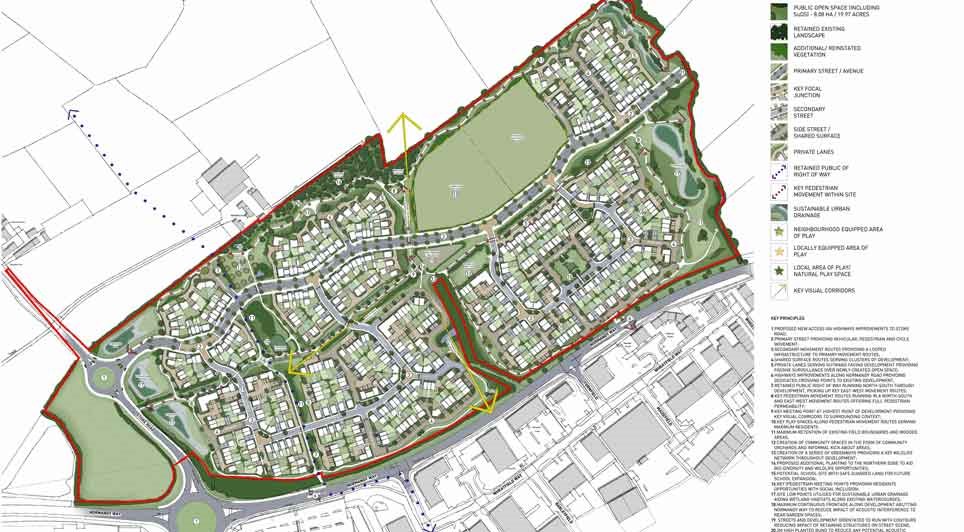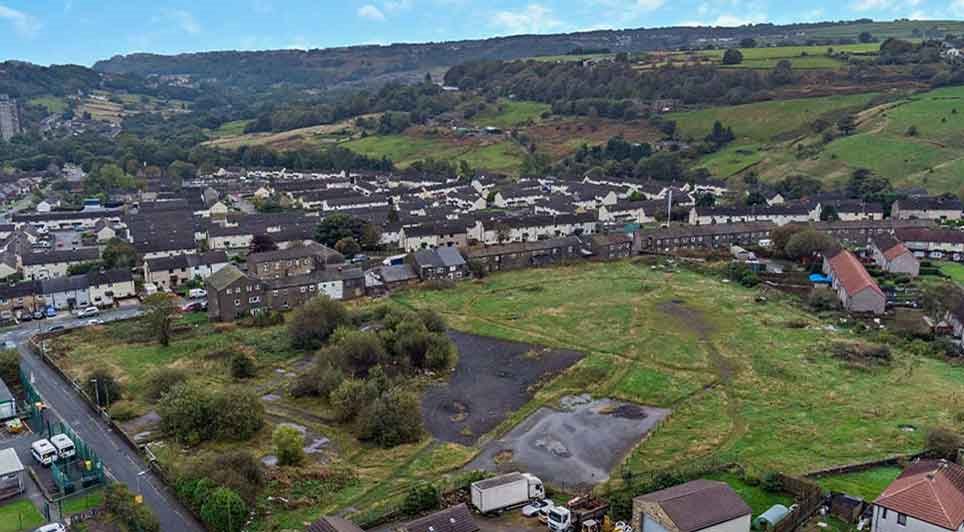Construction News
03/10/2022
A Hard Rain: Preparing Your Construction Site For Flood After Drought

This summer has been associated with record temperatures, hosepipe bans and declared drought.
Flooding might seem to be the last area of current concern, but that would be wrong; flood tends to follow drought. "The War Office is always preparing for the last war", wrote Churchill in The Gathering Storm. Time to start thinking about the next problem, not the last one.
Why flood follows drought
There are three main types of flood. Fluvial floods occur when the water in a river or lake rises and overflows into the surrounding land. Coastal floods, also known as storm surges, are inundations of seawater into coastal land, typically after storms. Pluvial floods, also known as flash floods, are events where the rainfall exceeds the ability of the soil to absorb moisture, meaning surface water spreads laterally. Scientists expect flash floods especially to get worse in both quantity and severity, because of climate change: for every additional one degree Celsius, water vapor in the atmosphere increases by 7%, meaning more rain. And, of course, rain and sea level change affects other type of flood too: the US government website climate.gov notes that sea level has risen 91 mm since 1993, that the rate of rise is increasing, and that in many locations, "high-tide flooding is now 300% to more than 900% more frequent than it was 50 years ago".
Drought doesn’t cause the rain, but it does bake the soil into an impermeable surface, meaning water doesn’t vanish into the earth. With any sort of flood, but especially flash floods, a harder ground surface increases the probability and severity of flooding. Watch this 60-second video from the Guardian to see the concept demonstrated.
Am I at risk from flooding?
Fortunately, the UK government has a tool you can use to check your level of flood risk. This link is for England, but go there also for further links to check flood risk throughout the UK. The Northern Ireland tool takes a somewhat harder to use flood map approach, but the other tools break down risk very simply for any address, assessing surface water risk (i.e., flash flooding) separately from other forms of flooding, as well as offering the detailed flood maps. Other governments offer similar resources.
What do I have to do to prepare for flooding
If you are a developer, flood risk assessment for the proposed development is, of course, part of the planning application process. This is quite separate from keeping your site safe while you build.
As for protecting your site during construction, use the government tools discussed above to check your risk. You may also wish to email the Environment Agency and ask for the flood history of the site. Unless you’re satisfied that risks are low, develop a formal flood plan and an evacuation plan, and sign up for free flood alerts from GOV.UK and the Met Office. Download a flood plan template here and read general government advice to businesses on flood preparation here.
Look at the geography of your site to decide how much drainage there is, and whether it would be useful to invest in pumps and train staff in their use. If you operate a pump, go here to see if you’ll need an environmental permit for that.
Don’t let standing water build up; if there are large puddles on your site, always deal with them right away, because they may build into an avoidable flood. In cold weather, run water through pipes periodically even if you’re not using them for anything. This can stop cold water turning to ice.
The Health and Safety Executive generally advises that sites should be clear and tidy, with structures and trenches safe from collapse. Heed that advice.
What do I do after an alert or flood?
If you get a flood alert, move equipment and materials to somewhere higher or safer. Be sure to have thought in advance about how you will move dangerous items such as chemicals. Ideally, store them in somewhere flood-safe at all times. Turn off utilities and unplug equipment. If you’re wet or standing in water, flip any electrical switches or fuses with a dry stick. Take before and after photos for insurance purposes.
Avoid contact with water wherever possible, as it may have become contaminated with sewage, droppings or chemicals. Definitely don’t wade into water – other risks here include stepping onto sharp objects or uncovered drains. Be aware that most flood deaths are due to people driving vehicles into water that turns out to be deeper than they thought.
The days of sandbags as the best flood defence are over. Modern flood barriers interconnect to form a solid barrier, self-filling with the floodwater itself to become stable. Go here for an example of such barriers. Companies can install this protection quickly after you receive an alert. If risk is high, though, you may wish to install such defences in advance. Whoever you source barriers from can likely help in other ways, for example providing ground protection matting to turn a muddy surface into a safe walkway. Using those mats from the start of construction stops people and machinery breaking up the ground and encouraging mud formation.
Flooding might seem to be the last area of current concern, but that would be wrong; flood tends to follow drought. "The War Office is always preparing for the last war", wrote Churchill in The Gathering Storm. Time to start thinking about the next problem, not the last one.
Why flood follows drought
There are three main types of flood. Fluvial floods occur when the water in a river or lake rises and overflows into the surrounding land. Coastal floods, also known as storm surges, are inundations of seawater into coastal land, typically after storms. Pluvial floods, also known as flash floods, are events where the rainfall exceeds the ability of the soil to absorb moisture, meaning surface water spreads laterally. Scientists expect flash floods especially to get worse in both quantity and severity, because of climate change: for every additional one degree Celsius, water vapor in the atmosphere increases by 7%, meaning more rain. And, of course, rain and sea level change affects other type of flood too: the US government website climate.gov notes that sea level has risen 91 mm since 1993, that the rate of rise is increasing, and that in many locations, "high-tide flooding is now 300% to more than 900% more frequent than it was 50 years ago".
Drought doesn’t cause the rain, but it does bake the soil into an impermeable surface, meaning water doesn’t vanish into the earth. With any sort of flood, but especially flash floods, a harder ground surface increases the probability and severity of flooding. Watch this 60-second video from the Guardian to see the concept demonstrated.
Am I at risk from flooding?
Fortunately, the UK government has a tool you can use to check your level of flood risk. This link is for England, but go there also for further links to check flood risk throughout the UK. The Northern Ireland tool takes a somewhat harder to use flood map approach, but the other tools break down risk very simply for any address, assessing surface water risk (i.e., flash flooding) separately from other forms of flooding, as well as offering the detailed flood maps. Other governments offer similar resources.
What do I have to do to prepare for flooding
If you are a developer, flood risk assessment for the proposed development is, of course, part of the planning application process. This is quite separate from keeping your site safe while you build.
As for protecting your site during construction, use the government tools discussed above to check your risk. You may also wish to email the Environment Agency and ask for the flood history of the site. Unless you’re satisfied that risks are low, develop a formal flood plan and an evacuation plan, and sign up for free flood alerts from GOV.UK and the Met Office. Download a flood plan template here and read general government advice to businesses on flood preparation here.
Look at the geography of your site to decide how much drainage there is, and whether it would be useful to invest in pumps and train staff in their use. If you operate a pump, go here to see if you’ll need an environmental permit for that.
Don’t let standing water build up; if there are large puddles on your site, always deal with them right away, because they may build into an avoidable flood. In cold weather, run water through pipes periodically even if you’re not using them for anything. This can stop cold water turning to ice.
The Health and Safety Executive generally advises that sites should be clear and tidy, with structures and trenches safe from collapse. Heed that advice.
What do I do after an alert or flood?
If you get a flood alert, move equipment and materials to somewhere higher or safer. Be sure to have thought in advance about how you will move dangerous items such as chemicals. Ideally, store them in somewhere flood-safe at all times. Turn off utilities and unplug equipment. If you’re wet or standing in water, flip any electrical switches or fuses with a dry stick. Take before and after photos for insurance purposes.
Avoid contact with water wherever possible, as it may have become contaminated with sewage, droppings or chemicals. Definitely don’t wade into water – other risks here include stepping onto sharp objects or uncovered drains. Be aware that most flood deaths are due to people driving vehicles into water that turns out to be deeper than they thought.
The days of sandbags as the best flood defence are over. Modern flood barriers interconnect to form a solid barrier, self-filling with the floodwater itself to become stable. Go here for an example of such barriers. Companies can install this protection quickly after you receive an alert. If risk is high, though, you may wish to install such defences in advance. Whoever you source barriers from can likely help in other ways, for example providing ground protection matting to turn a muddy surface into a safe walkway. Using those mats from the start of construction stops people and machinery breaking up the ground and encouraging mud formation.

05/02/2025
Stockport Mayoral Development Corporation (MDC) and ECF, a joint venture between Homes England, Legal & General, and Muse, have selected Vinci as the preferred contractor for Phase 1 of Stockport 8, a £350 million residential development west of Stockport town centre.
The decision follows a competi

05/02/2025
Vistry Group has finalised contracts for a significant housing development in Hinckley, Leicestershire, securing outline planning permission to deliver 475 new homes in the area.
The development, located east of Stoke Road and north of Normandy Way in the town's northern region, has a projected val

05/02/2025
Wilten Construction has been awarded a second Design and Build contract at Gateway 14 by client Gateway 14 Ltd and Jaynic.
The project involves the development of a state-of-the-art, three-storey Skills and Innovation Centre spanning 35,000 sq ft in the heart of Gateway 14. Designed to achieve BREE

05/02/2025
Knowsley Council has approved a major housing development in Kirkby, giving the green light to 800 new energy-efficient homes in the town's centre.
The decision also secures £7.7 million in Section 106 contributions from developer Barratt David Wilson Homes, further boosting local investment.
The

05/02/2025
Keepmoat Homes has announced plans to invest over £50 million in three new housing developments across Calderdale, aiming to deliver more than 200 new homes.
The developments, undertaken in partnership with Calderdale Council, form part of the North Halifax Transformation Programme, a local authori

05/02/2025
Essential renewal work at Skerne Road level crossing in Driffield has been completed. Over a six-day period, engineers replaced decades-old equipment, installing a state-of-the-art operating system, replacing the level crossing deck, and resurfacing the road.
The newly installed operating system is

05/02/2025
Construction firm GRAHAM is currently carrying out essential restoration work at the National Railway Museum in York, replacing the Grade II listed roof structure at Station Hall.
Originally built between 1875 and 1877 as a goods station, Station Hall now houses the museum’s six royal carriages.

05/02/2025
Mezzanine floors are commonly associated with additional storage or expanded floor space, but did you know they can also have a profound impact on employee productivity and morale? At Doity Engineering, we specialise in designing and installing mezzanine floors for

05/02/2025
Construction work is commencing on a new solar array at Weeton Barracks in Lancashire that will generate over one third of the site’s energy needs.
The work has been funded under the British Army’s Project Prometheus, a scheme that is increasing renewable energy across the army estate through inst

05/02/2025
The regeneration of Hartlepool's waterfront has reached a significant milestone with a £631,000 grant from The National Lottery Heritage Fund.
The funding will support the development phase of the 'Tides of Change' project, aimed at transforming the visitor experience at the Museum of Hartlepool a
 UK
UK Ireland
Ireland Scotland
Scotland London
London











